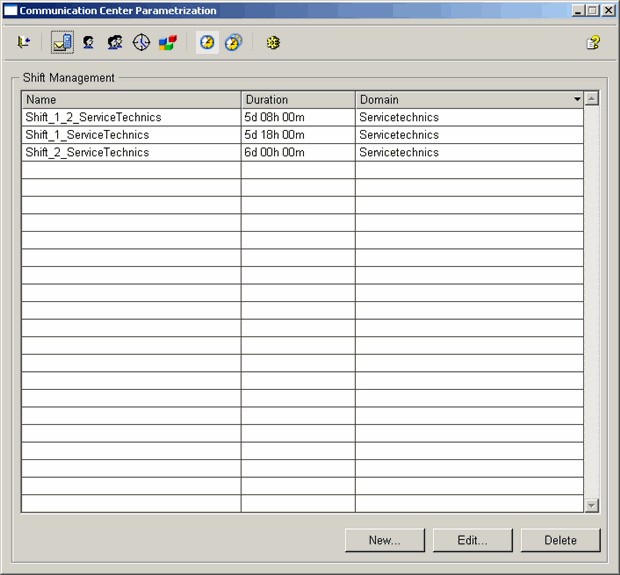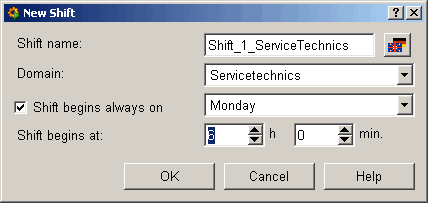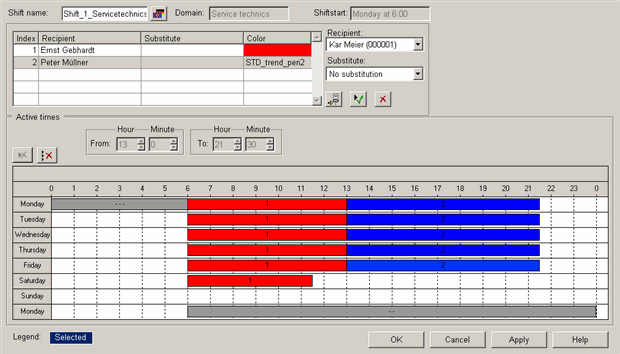Define shifts
Instead of using a static call list where persons are configured by branches and are informed in case of errors, shifts can be defined. By configuring shifts you determine a basic responsibility at a particular time (this recurs at defined intervals - for example, all two weeks). The responsibility of single persons at specific times is configured using so called shift plans. Shift plans represent single shifts.
The shifts are created in the "Shift management" panel which is opened by clicking the
![]() button.
button.

By clicking the New... button another panel is opened for the definition of a shift. In the following example 2 shifts are created for the branch "servicetechnics". These shifts are later merged.

Configure in this panel a shift name, the branch and when the shift should start (weekday and time) as shown in the figure above. The weekday is optional. This means no concrete days are used for the shift by deactivating the check box. Instead day1, day2 etc. are used. (this means when activating this check box, the shift is bound to days. When deactivating the check box, the shift is not bound to days. In case of shift that is not bound to days no gaps are generated). The following graphics clarifies a day bound and a not day bound shift:

If this shift is now aggregated (see also Define shift sequences) a gap is generated since no responsibility was defined on Saturday and Sunday and the shift always starts on monday.

In this shift no gap is generated after the aggregation since the start of the shift is not day bound (this means the shift starts over again after the day5).
After the shift was created, it is configured in another panel that is opened by clicking the Edit... button.

First the users of the branch "servicetechnics" who are responsible during this shift, are assigned in the upper part of the panel. Furthermore, a deputy can be specified for each associated user (not in this example). In the lower part of the panel the responsible persons within a specific period are represented via bars.
When clicking OK after defining a shift the single shifts are optimized. If a day is for example, divided into 3 periods (0-8, 8-18, 18-24) and this three shifts are assigned to the one and the same person, the bar is merged to one. During this optimization bars might be cut and the period is shorten essentially.
The second shift is defined like already described. Unlike the first shift, the responsible persons are changed for the period (the user Peter Müllner is responsible from Monday to Friday within the time from 06:00 to 14:00 and on Saturday he is also responsible from 06:00 until 12:00). The configuration of the second shift looks as follows:

Alarms are not forwarded within periods for which no users are configured. So that specialized personnel is informed about errors at the plant also at these times a fallback list (such lists are also used when using static call lists, see also Assign call lists to branches) can be configured. The fallback list contains one or more users who are informed in case of errors, in the configured sequence. The fallback list is configured in the Branch administration panel.



